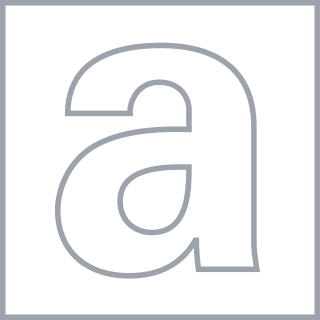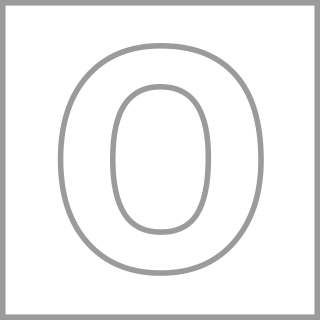Related Research Articles

The General Certificate of Secondary Education (GCSE) is an academic qualification in a range of subjects taken in England, Wales and Northern Ireland, having been introduced in September 1986 and its first exams taken in 1988. State schools in Scotland use the Scottish Qualifications Certificate instead. However, private schools in Scotland often choose to follow the English GCSE system.
The General Certificate of Education (GCE) is a subject-specific family of academic qualifications used in awarding bodies in England, Wales, Northern Ireland, Crown dependencies and a few Commonwealth countries. For some time, the Scottish education system has been different from those in the other countries of the United Kingdom.

The International General Certificate of Secondary Education (IGCSE) is an English language based secondary qualification similar to the GCSE and is recognised in the United Kingdom as being equivalent to the GCSE for the purposes of recognising prior attainment. It was developed by Cambridge Assessment International Education. The examination boards Edexcel, Learning Resource Network (LRN), and Oxford AQA also offer their own versions of International GCSEs. Students normally begin studying the syllabus at the beginning of Year 10 and take the test at the end of Year 11. However, in some international schools, students can begin studying the syllabus at the beginning of Year 9 and take the test at the end of Year 10.
The Hong Kong Certificate of Education Examination was a standardised examination between 1974 and 2011 after most local students' five-year secondary education, conducted by the Hong Kong Examinations and Assessment Authority (HKEAA), awarding the Hong Kong Certificate of Education secondary school leaving qualification. The examination has been discontinued in 2012 and its roles are now replaced by the Hong Kong Diploma of Secondary Education as part of educational reforms in Hong Kong. It was considered equivalent to the United Kingdom's GCSE.

The Malaysian Higher School Certificate, commonly abbreviated as STPM, is a pre-university examination in Malaysia. It was formerly known as the Higher School Certificate (HSC). Since 1982, STPM has been administered by the Malaysian Examinations Council (MEC), a statutory council under the Ministry of Education.

The Sijil Pelajaran Malaysia (SPM), or the Malaysian Certificate of Education, is a national examination sat for by all fifth-form secondary school students in Malaysia. It is the equivalent of the General Certificate of Secondary Education (GCSE) of England, Wales and Northern Ireland; the Nationals 4/5 of Scotland; and the GCE Ordinary Level of the Commonwealth of Nations. It is the leaving examination of the eleventh grade of schooling.
Educational stages are subdivisions of formal learning, typically covering early childhood education, primary education, secondary education and tertiary education. The United Nations Educational, Scientific and Cultural Organization (UNESCO) recognizes nine levels of education in its International Standard Classification of Education (ISCED) system. UNESCO's International Bureau of Education maintains a database of country-specific education systems and their stages. Some countries divide levels of study into grades or forms for school children in the same year.
Starting in September 2018, 12-year secondary education will replace 11-year which was mandatory before that. As a rule, schooling begins at the age of 6, unless your birthday is on or after 1 September. In 2016/17, the number of students in primary and secondary school reached 3,846,000, in vocational school 285,800, and in higher education 1,586,700 students. According to 2017 EduConf speech of the (then) Minister of Education and Science of Ukraine, Liliya Hrynevych, the amount of budget financing for the sphere of education would reach about ₴53 billion in 2017.
Tawjihi or Al-Tawjeehi is the General Secondary Education Certificate Examination in Jordan and Palestine. It is the last stage of school education. To sit for the exam, students are required to finish 2 years of pre-school education, 10 years of basic education, and 2 years of secondary academic or vocational education. Subjects in the exam include Arabic, English, Mathematics, Physics, Biology, Chemistry, Computer Science, Geology, Civil Studies and Islamic studies.
Education in Belarus is free at all levels except for higher education. The government ministry that oversees the running of the school systems is the Ministry of Education of the Republic of Belarus. Each of the regions inside Belarus has oversight of the education system, and students may attend either a public (state) or a private school. The current structure of the educational system was established by decree in 1994. The education system is also based on The Education Code of the Republic of Belarus and other educational standards.
Academic grading in the Netherlands has remained unchanged for several decades.
This is an article about the grading used below degree level in most of the United Kingdom. The entire United Kingdom does not use the same grading scheme. For a degree level, see British undergraduate degree classification.
Singapore's grading system in schools is differentiated by the existence of many types of institutions with different education foci and systems. The grading systems that are used at Primary, Secondary, and Junior College levels are the most fundamental to the local education system,
In the Indian education system of some Indian states, the pre-university course (PUC) or pre-degree course (PDC) is referred to as intermediate or +2 course, which is a two-year senior secondary education course that succeeds the tenth grade and precedes to the completion of an Senior Secondary Course. The First Year of the PUC is commonly referred to as 1st PUC or Class 11th,, and the Second Year of the PUC as 2nd PUC or Class 12th. A college which offers the PUC is simply known as a 'PU college' or 'Intermediate College' which is also referred to as junior college.

The A-level is a subject-based qualification conferred as part of the General Certificate of Education, as well as a school leaving qualification offered by the educational bodies in the United Kingdom and the educational authorities of British Crown dependencies to students completing secondary or pre-university education. They were introduced in England and Wales in 1951 to replace the Higher School Certificate. The A-level permits students to have potential access to a chosen university they applied to with UCAS points. They could be accepted into it should they meet the requirements of the university.
Serbia inherited the academic grading system of the Socialist Federal Republic of Yugoslavia. The grading process uses an absolute achievement scale to determine the grade of a student.
The A-level is a main school leaving qualification of the General Certificate of Education in England, Wales, Northern Ireland, the Channel Islands and the Isle of Man. It is available as an alternative qualification in other countries, where it is similarly known as an A-Level.

The General Certificate of Education (GCE) Ordinary Level, also called the O-level or O level, was a subject-based academic qualification. Introduced in 1951 as a replacement for the 16+ School Certificate (SC), the O-level would act as a pathway to the new, more in-depth and academically rigorous A-level, in England, Wales and Northern Ireland. Later, the complementary and more vocational Certificate of Secondary Education (CSE) was added to broaden the subjects available and offer qualifications in non-academic subjects.
This is a list of grading systems used by countries of the world, primarily within the fields of secondary education and university education, organized by continent with links to specifics in numerous entries.
The Singapore-Cambridge General Certificate of Education Normal Level examination is a national examination held annually in Singapore. It is taken after four years in the Normal (Academic) or Normal (Technical) stream. For subjects examined in English and foreign languages, the examining authority are the University of Cambridge Local Examinations Syndicate. For localised language subjects, the examining authority is the Ministry of Education (MOE).
References
- ↑ "Нормы оценки результатов учебной деятельности учащихся". adu.by. Retrieved 2021-06-15.
- ↑ "Нормы оценки образовательные". Национальный Образовательный Портал.
- ↑ "Belarus Grading System". www.classbase.com. Retrieved 2016-08-25.
- ↑ Минск-Новости (2020-10-14). "Почему «Искусство» вернули в школьную программу и какое будущее у этого предмета? Говорим с автором учебных пособий". «Минск-Новости» (in Russian). Retrieved 2021-06-14.